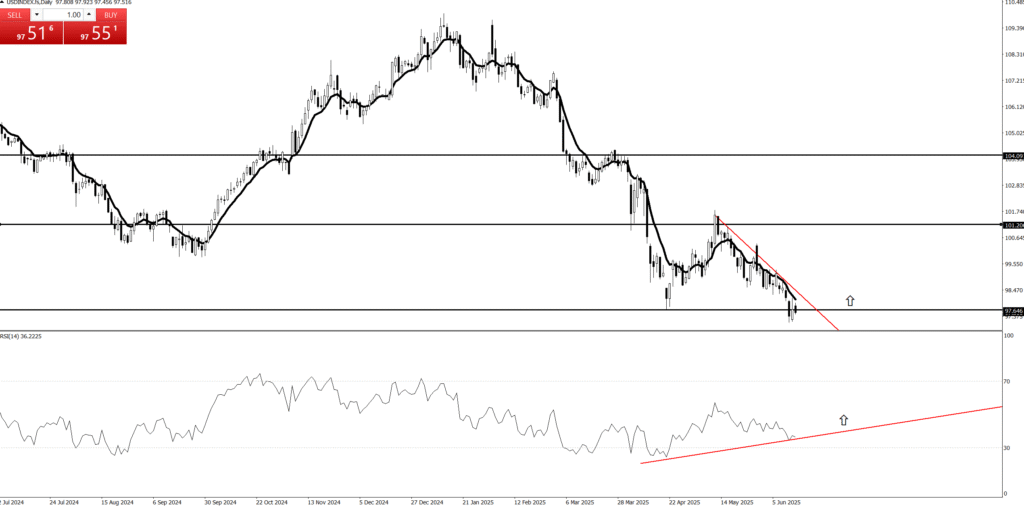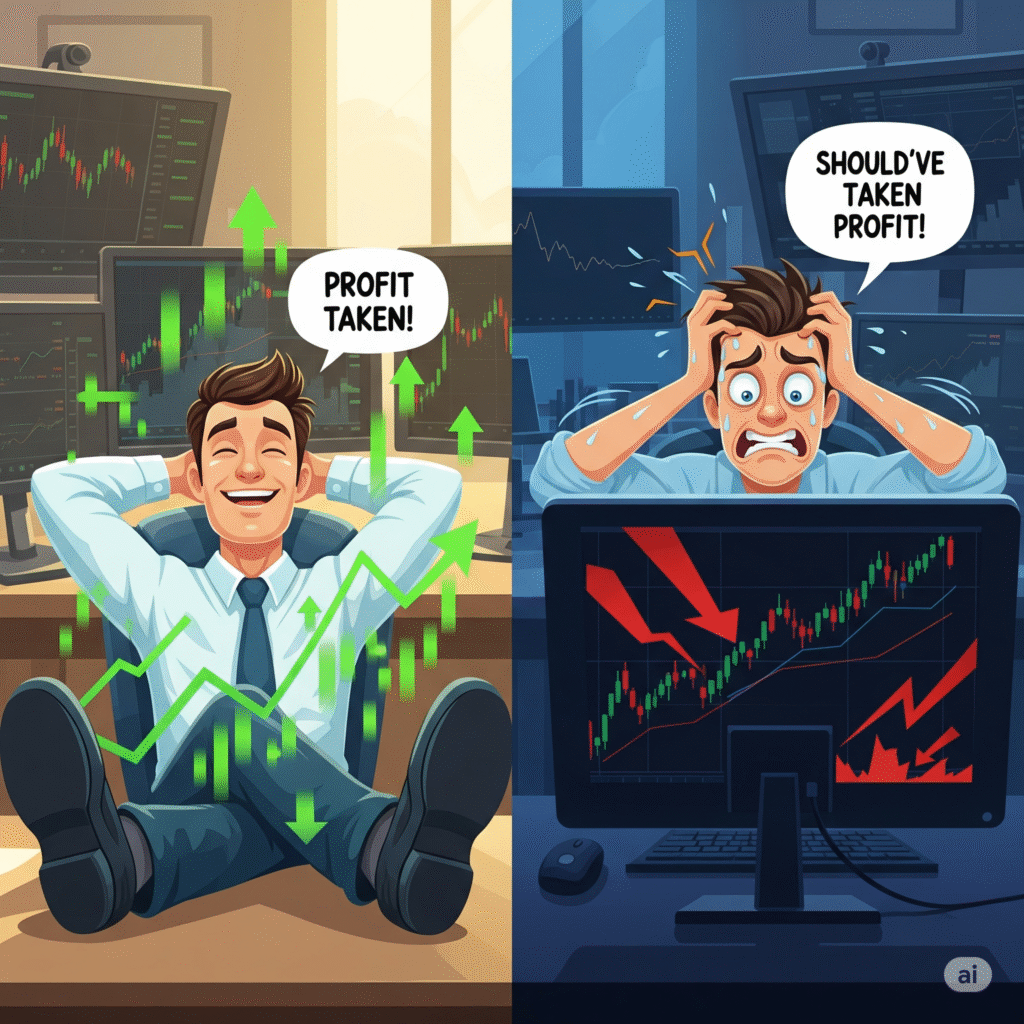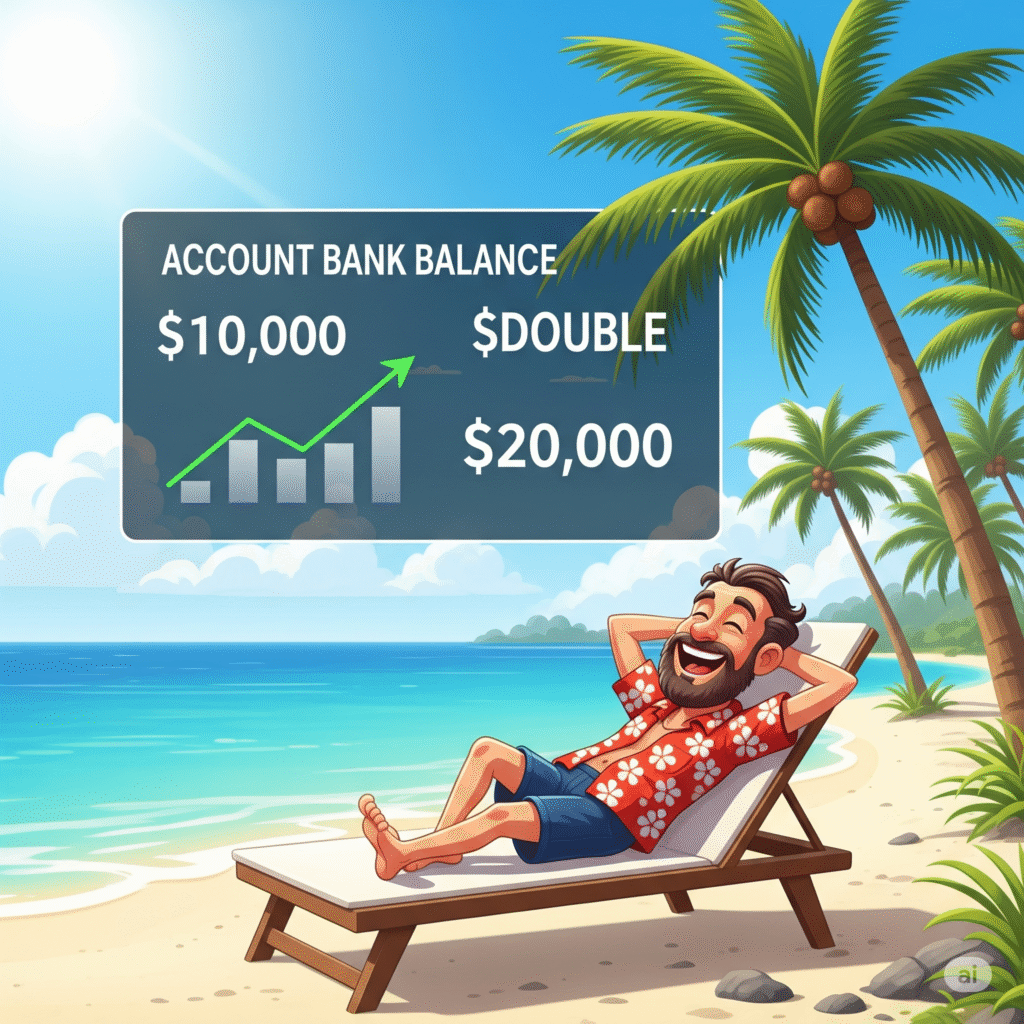Take Profit Vs. Not Taking Profit


Lorem ipsum dolor sit amet, consectetur adipiscing elit. Ut elit tellus, luctus nec ullamcorper mattis, pulvinar dapibus leo.

Lorem ipsum dolor sit amet, consectetur adipiscing elit. Ut elit tellus, luctus nec ullamcorper mattis, pulvinar dapibus leo.
Lorem ipsum dolor sit amet, consectetur adipiscing elit. Ut elit tellus, luctus nec ullamcorper mattis, pulvinar dapibus leo.
- Is the current trend bullish or bearish?
2. Is the main trend bullish or bearish on selected timeframe?
3. Where is price now? where are the keylevels?
4. Are there any Price Action?
5. Are there any failed Price Action?
6. Is there evidence that the market is getting rid of buyers or sellers?
💰“The Power of Price Action”
Quotes:
“Let Price Tell the Story.”
“Price Never Lies – Everything Else Might.”
“Trade What You See, Not What You Think.”
“Candles Speak Louder Than Indicators.”
- “The Truth is in the Candles.”
4. Take Profit Vs. Not Taking Profit

Taking profit is a crucial component of any trading strategy, and its benefits, when executed properly, are significant. Here are the key advantages, or “pros,” of using a take-profit target:
Guaranteed Realized Gains: This is the most obvious benefit. A take-profit order ensures that you lock in your gains at a predefined level. Without it, a profitable trade could easily reverse and turn into a losing one, or at least significantly reduce your unrealized profits. It turns potential profit into actual cash in your account.
Emotional Discipline: Just as a stop loss removes emotion from cutting losses, a take profit removes emotion from greed. It prevents you from holding onto a trade for “just a little bit more” hoping for unrealistic gains, only to see the market reverse and erase your profits. It enforces your pre-planned exit strategy.
Risk Management Enhancement: By defining your profit target alongside your stop loss, you establish a clear risk-reward ratio for every trade. This allows for proper position sizing and ensures that your potential gains justify your potential losses, contributing to a positive expectancy over time.
Capital Rotation/Opportunity Cost: Realizing profits frees up your capital. This cash can then be deployed into new, potentially more promising trading opportunities, rather than being tied up in an existing trade that might consolidate or reverse.
Reduces Exposure to Market Volatility: Once your profit target is hit, you are out of the market for that particular trade. This reduces your exposure to sudden, unpredictable price swings or news events that could otherwise erode your open profits.
Psychological Reinforcement: Consistently hitting your take-profit targets, even if they are modest, provides positive psychological reinforcement. It builds confidence in your strategy and discipline, contributing to a more sustainable and less stressful trading journey.
Systematic Approach: Using take-profit orders is a cornerstone of a systematic and rules-based trading approach. It means you’re not guessing when to exit but following a predefined plan, which is essential for consistent results and backtesting.
Okay, let’s explore the “cons” of not taking profit, which essentially means letting your winning trades run indefinitely without ever cashing out at a predefined target. It sounds bold, but it comes with its own set of unique frustrations and risks.
Here are the downsides, or “cons,” of choosing to forgo a take-profit strategy:
“Paper Profits” Can Vanish: This is the most common and painful drawback. You might see your trade up by 5%, then 10%, then 20% on paper, feeling like a genius. But without a specific exit point, the market can (and often does) reverse, wiping out all your unrealized gains and potentially turning a significant winner into a breakeven trade, or even a loss. The satisfaction of “being up” is meaningless until you’ve actually closed the position.
Emotional Stress and Greed Creep: Continuously watching your profits fluctuate can be incredibly stressful. Greed can set in, making you hold on for more and more, even when signs of a reversal appear. This can lead to irrational decisions, like ignoring valid exit signals because you’re convinced it will go “just a little bit higher.”
Capital Imprisonment in Stagnant Trades: Even if a trade doesn’t fully reverse, it might enter a prolonged period of consolidation or slow pullback after making significant gains. If you don’t take profit, your capital remains tied up in this stagnant position, missing out on new, potentially faster-moving opportunities elsewhere. Your money isn’t working as efficiently as it could be.
Missed Opportunity to Re-enter or Reallocate: By staying in one trade indefinitely, you might miss a chance to take profits, let the market pull back (or consolidate), and then re-enter the same asset at a better price, effectively getting “more shares” for the same capital. Or, you miss opportunities in entirely different, more promising assets.
Difficulty in Strategy Backtesting/Optimization: If you don’t have clear rules for taking profit, it becomes very hard to systematically test or optimize your trading strategy. Without defined profit exits, your strategy becomes discretionary and less quantifiable.
Psychological Burnout: Constantly being “in” the market and managing open profits (and their inevitable drawdowns) without the satisfaction of locking in gains can lead to mental fatigue and burnout. The psychological reward of closing a winning trade is important for sustained trading discipline.
Exposure to Unexpected Events: The longer you hold an open position, the greater your exposure to unforeseen “black swan” events, sudden news, or significant market shifts that can rapidly erase even substantial accumulated profits.
In essence, while letting winners run can be a powerful concept in very strong, sustained trends, the absence of any profit-taking mechanism means you’re leaving the door wide open for the market to snatch back your hard-earned (or paper-earned) gains. It sacrifices guaranteed profit for the chance of greater profit, which often turns into regret.
💰Quotes:
“Enter the trade — then sit on your hands like a monk!”
“We don’t click and panic. We click and chill.”
“Traders who wait, get paid. Traders who fidget… donate!”
“We enter the trade, then do absolutely nothing like pros.”
“Let the market work. You’re not its boss.”
💰Normal Tone Slogans:
“Enter with a plan, then let the trade play out.”
“The work is in the setup — the result comes with patience.”
“We don’t babysit trades. We trust our edge.”
“Entry is action. Waiting is discipline.”
“After entry, emotion has no place — only patience.”

💰🔐 What is a Stop Loss?
A Stop Loss is a risk management tool used in trading. It’s a predefined price level where your position will automatically close if the market moves against you — to limit your losses..

💰📌 Example:
You buy EUR/USD at 1.1000, and set a Stop Loss at 1.0950.
If the price drops to 1.0950 → the trade closes automatically → you limit your loss.

💰Why It’s Important:
Protects your capital
It limits the amount of money you can lose on a trade.Removes emotion
Keeps you from holding on to losing positions out of hope or fear.Disciplined trading
Forces you to define risk before entering a trade.- Saves time and stress – no need to watch every move.

💰🎯 Stop Loss Tips:
Don’t place it too tight – it might trigger too early.
Don’t place it too wide – it might risk too much.
Use technical levels – like below support or above resistance.
Follow a risk percentage rule – for example: never risk more than 1-2% of your account on a single trade.

4. Take Profit Vs. Not Taking Profit
Alright, let’s talk about the sheer, unadulterated joy (and quiet smugness) of taking profit! This isn’t just a trading strategy; it’s a moment of triumph, a tiny victory dance in your brain, and the universe’s way of telling you, “Good job, you magnificent financial beast!”
Here are the glorious “pros” of actually clicking that “close trade” button and locking in your gains, delivered with a chuckle:
Turning “Paper Gains” into “Actual Money” (Mind Blown!): You know those elusive “paper profits”? They’re like Bigfoot – everyone talks about them, but have you actually seen one in your bank account? Taking profit is the magical act that transforms those ethereal, fleeting numbers on your screen into tangible, spendable cash. It’s the moment your P&L sheet stops being a theoretical exercise and starts paying for that extra guacamole.
Greed’s Kryptonite (Because Greed is a Jerk): Let’s face it, greed is that little devil on your shoulder, constantly whispering, “Just one more tick! It’s going higher! Don’t be a chicken!” Taking profit is your inner financial superhero swooping in, punching Greed in the face, and saying, “Nope! We got what we came for. Now step away from the keyboard before you ruin everything!” It’s the ultimate self-intervention.
The “I Told You So!” Moment (to the Market and Yourself): You set your target. The market wiggled, maybe tried to scare you, but you held firm. When that take-profit hits, it’s like the market finally concedes, “Alright, alright, you win this round. Take your money and go.” And to your inner critic, it’s a triumphant, “See?! I’m not entirely useless!”
Instant Stress Reduction (Like a Financial Spa Day): Having open, profitable trades can be almost as stressful as losing ones. You’re constantly checking, wondering if it’ll reverse. But when that take-profit hits, a wave of calm washes over you. No more monitoring! No more worrying! It’s pure, unadulterated financial zen. Ahhh, liberation!
Re-Arming Your Account (For the Next Financial Adventure): Locked-in profits mean fresh capital ready for action! It’s like reloading your laser gun for the next level of the game. Instead of having your money tied up indefinitely in a trade that might be consolidating or pulling back, it’s now free to hunt for the next golden opportunity. Go forth, my money, and multiply again!
The Bragging Rights (Even if Just to Your Pet): Who cares if it was a small profit? You made money! You stuck to your plan! You beat the market (at least for a moment)! You can tell your dog about your strategic prowess, and it’ll look at you with proud, unwavering admiration (or just wonder if you’re holding a treat).
In essence, taking profit is the vital act that turns your trading hobby into an actual, income-generating endeavor. It’s the sweet, satisfying closure that prevents “paper rich” from becoming “actually broke.”
💰Quotes:
“Enter the trade — then sit on your hands like a monk!”
“We don’t click and panic. We click and chill.”
“Traders who wait, get paid. Traders who fidget… donate!”
“We enter the trade, then do absolutely nothing like pros.”
“Let the market work. You’re not its boss.”
💰Normal Tone Slogans:
“Enter with a plan, then let the trade play out.”
“The work is in the setup — the result comes with patience.”
“We don’t babysit trades. We trust our edge.”
“Entry is action. Waiting is discipline.”
“After entry, emotion has no place — only patience.”

Alright, let’s explore the utterly hilarious (if you’re not the one doing it) downsides of refusing to take profit. It’s like finding a winning lottery ticket, deciding to wait for the jackpot to get even bigger, and then watching it blow away in the wind.
Not Taking Profit: The “Paper Billionaire” Path (Where Riches Are Just a Cruel Joke)
You’ve got a winner! The market’s moving your way, your screen is green, and you’re mentally picking out your yacht. “Why would I take profit now?” you scoff, “It’s going higher! I’m a visionary, a genius, a market whisperer!” And that, my friends, is when the market decides to play its favorite game: “How quickly can I make your paper profits vanish?”
Here are the delightful “cons” of letting your winners run, run, run… often straight back to zero:
The “Paper Profits” Mirage: Now You See It, Now You’re Sad: Oh, the joy of seeing your trade up 10%, 20%, even 50% on paper! You tell your friends, you gloat a little. But because you didn’t click that “close” button, those profits are like a unicorn – beautiful, fantastical, and utterly non-existent in your bank account. Then, faster than you can say “margin call,” the market does a dramatic U-turn, and your paper kingdom crumbles. You went from “rich” to “mildly annoyed” to “why am I like this?” in warp speed.
Greed’s Insidious Whisper (and Loud Scream): That little voice inside your head that whispers “just a little more profit” quickly escalates to a full-blown shouting match: “WHY ARE YOU THINKING OF SELLING?! IT’S GOING TO THE MOOOOON! YOU’LL REGRET IT FOREVER!” This internal monologue leads you to ignore all rational signs of a reversal, until you’re left holding the bag of tears and what used to be a very nice profit.
The “Boomerang Effect”: Your Profits Come Back… to Hit You in the Face: You watch your trade soar, feeling smug. Then it pulls back a bit. “Just a healthy retrace!” you tell yourself. It pulls back more. “Still going higher, I swear!” Then, WHOOSH! It’s back to breakeven. Or worse, it plunges into a loss. Your beautiful profits didn’t just disappear; they came back with a vengeance to mock your indecision.
Capital Hostage Situation: Your Money’s on Permanent Vacation in Limbo-land: While your winning trade is slowly bleeding back to mediocrity, your capital is tied up, unable to participate in new, potentially fantastic opportunities. It’s like having your star player stuck on the bench watching everyone else score goals, because you refused to substitute him when he was on fire. Your money is just sitting there, glaring at you.
The “Woulda, Coulda, Shoulda” Symphony of Regret: This is the post-trade concert you never want to attend. Every time you see the chart of that trade you didn’t close, you’ll hear the mournful violins of “I woulda had €500!” followed by the booming drums of “I coulda paid off that bill!” and the piercing flutes of “I shoulda just taken the money, you idiot!” It’s a psychological torture unique to non-profit-takers.
In short, while the idea of an unlimited profit sounds like a dream, in reality, not taking profit is often a hilarious (for observers) exercise in turning potential triumphs into spectacular displays of self-sabotage. It teaches you that sometimes, good enough is perfectly glorious, especially when it turns into actual cash!
Gemini can make mistakes, including about people, so double-check it. Your privacy & Ge
💰Quotes:
“Enter the trade — then sit on your hands like a monk!”
“We don’t click and panic. We click and chill.”
“Traders who wait, get paid. Traders who fidget… donate!”
“We enter the trade, then do absolutely nothing like pros.”
“Let the market work. You’re not its boss.”
💰Normal Tone Slogans:
“Enter with a plan, then let the trade play out.”
“The work is in the setup — the result comes with patience.”
“We don’t babysit trades. We trust our edge.”
“Entry is action. Waiting is discipline.”
“After entry, emotion has no place — only patience.”

💰🔐 What is a Stop Loss?
A Stop Loss is a risk management tool used in trading. It’s a predefined price level where your position will automatically close if the market moves against you — to limit your losses..

💰📌 Example:
You buy EUR/USD at 1.1000, and set a Stop Loss at 1.0950.
If the price drops to 1.0950 → the trade closes automatically → you limit your loss.

💰Why It’s Important:
Protects your capital
It limits the amount of money you can lose on a trade.Removes emotion
Keeps you from holding on to losing positions out of hope or fear.Disciplined trading
Forces you to define risk before entering a trade.- Saves time and stress – no need to watch every move.

💰🎯 Stop Loss Tips:
Don’t place it too tight – it might trigger too early.
Don’t place it too wide – it might risk too much.
Use technical levels – like below support or above resistance.
Follow a risk percentage rule – for example: never risk more than 1-2% of your account on a single trade.
